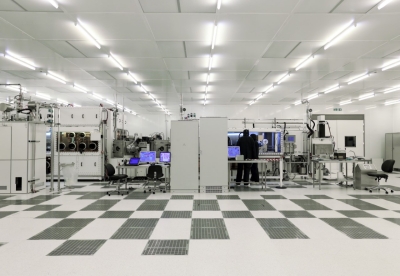‘Lyteus’ service including roll-to-roll laser cutting intended to support development of innovative lighting products.

Roll-up, roll-up
A consortium including the UK’s Centre for Process Innovation (CPI) is offering services via a new flexible-access pilot line for organic LED (OLED) production.
Known as “Lyteus“, the service is an off-shoot from the €15.7 million “PI-SCALE” pilot line project, which officially ended in June and was funded via Europe’s photonics-dedicated public-private partnership
With launch customers including the household names Audi and Pilkington, the plan is to help partner companies with sheet-to-sheet and roll-to-roll prototyping of flexible OLEDs, for applications across the architecture, automotive, aerospace, and consumer electronics sectors.
November workshop
Another of the consortium partners, the Fraunhofer Institute for Organic Electronics, Electron Beam and Plasma Technology (FEP) is scheduled to host a workshop on November 7, where it will showcase the Lyteus services to potential industrial customers.
According to the CPI, the workshop will enable interested parties to learn what the Lyteus pilot line service has to offer. “The industrial partners of PI-SCALE will also present their applications, and a number of experts and research partners will be available to discuss any details about the range of services included as part of Lyteus,” it stated.
Flexible OLEDs have the potential to be used in the design of any number of innovative new products across a huge variety of application areas. The technology enables the production of ultra-thin (thinner than 0.2 mm), flexible, lightweight, and transparent energy-efficient lighting products in almost limitless form factors.
As part of the project, CPI has developed what is believed to be the first roll-to-roll laser cutting process for singulation of flexible OLEDs.” To create the individual components, CPI used a unique and precise femtosecond laser,” it announced.” This means that the Lyteus pilot line can now perform high-quality and high-speed singulation for flexible OLED production.”
That innovation is expected to help customers of the pilot line to get new products to market faster and at a lower cost than was previously possible.
Adam Graham from CPI said: “PI-SCALE offers world-class capability and services in the pilot production of customised flexible OLEDs and will enable innovations in automotive, designer luminaire and aeronautic products.
“Importantly, companies will be able to test and develop their specific applications at an industrial scale, achieving the product performance, cost, yield, efficiency and safety requirements that facilitate mass market adoption.”
Customers ranging from startups to blue-chip multinationals should be able to use Lyteus to quickly and cost-effectively test and scale up their flexible OLED lighting concepts and turn them into market-ready products, adds CPI.
Cheaper AMOLED production to boost TV market
As one of the very first applications of the technology, the market for active-matrix OLED (AMOLED) TVs has already taken off to some extent – although the cost and complexity of AMOLED TV production, as well as competition from quantum dot-enhanced LCDs, has restricted the rate of development thus far.
But according to research consultancy IHS Markit the market is poised to boom next year, as falling production costs and demand for thinner TVs combine to give the sector some extra momentum.
Currently accounting for around 9 per cent of the market, AMOLED TV sales are expected to amount to $2.9 billion this year, a figure that IHS analyst Jerry Kang predicts will rise to approximately $4.7 billion next year.
“Starting in 2020, AMOLED TV average selling prices are expected to begin to decline due to increases in manufacturing capacity spurred by the adoption of a more advanced production process,” reports Kang. “This will pave the way for much more widespread adoption of AMOLED TVs.”
Currently, AMOLED TVs cost around four times as much to produce as LCDs, making them prohibitively expensive for most consumers – despite the obvious attractions of the ultra-thin, lightweight format, and the wide color gamut enabled by OLEDs.
But with the use of new multi-module glass substrates in the latest AMOLED display production facilities, supporting multiple display sizes on a single substrate, costs are expected to drop rapidly, while the range of available sizes grows simultaneously.
According to Kang, it means that the market share for AMOLED TVs will grow quickly from 2020, and will account for around one-fifth of all TVs sold by 2025, as the associated market jumps in value to some $7.5 billion.
Post time: Oct-31-2019



